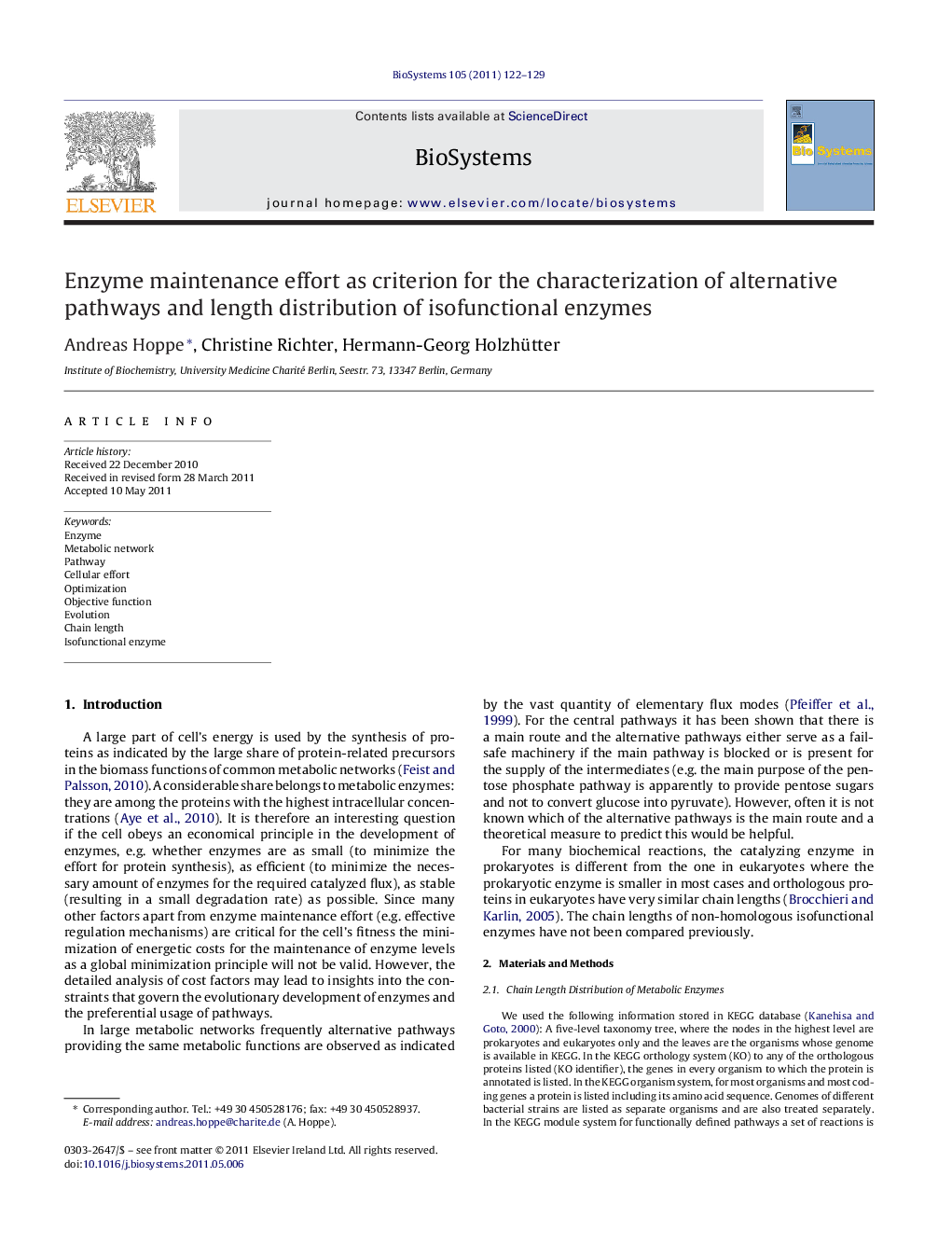| Article ID | Journal | Published Year | Pages | File Type |
|---|---|---|---|---|
| 2076245 | Biosystems | 2011 | 8 Pages |
Graphical abstractFigure optionsDownload full-size imageDownload as PowerPoint slideAbstractEnzyme chain length, efficiency, and degradation rate determine the cellular energy expense to maintain necessary enzymatic capacity. Since a reduction of the cellular effort for the supply of the metabolic apparatus is potentially beneficial to the organism, several cost parameters have been investigated.As an important cost factor, the chain lengths of functionally equivalent (not necessarily homologous) enzymes have been studied throughout the taxonomic tree. Not surprisingly, eukaryotes possess longer chains than prokaryotes and among eukaryotes complex organisms have longer chains than morphologically simple organisms. Notably, chain length ratios deviate substantially between metabolic pathways.As an application example, the maintenance of glycolysis is found to be energetically cheaper than of the pentose phosphate pathway (in human) and the maintenance of respiration cheaper than of ethanol fermentation (in yeast). Interestingly, in the latter case the larger size of the respiratory chain enzymes is more than compensated by other cost factors. Catalytic turnover number (kcat) turns out to be the dominating cost factor in these examples.
